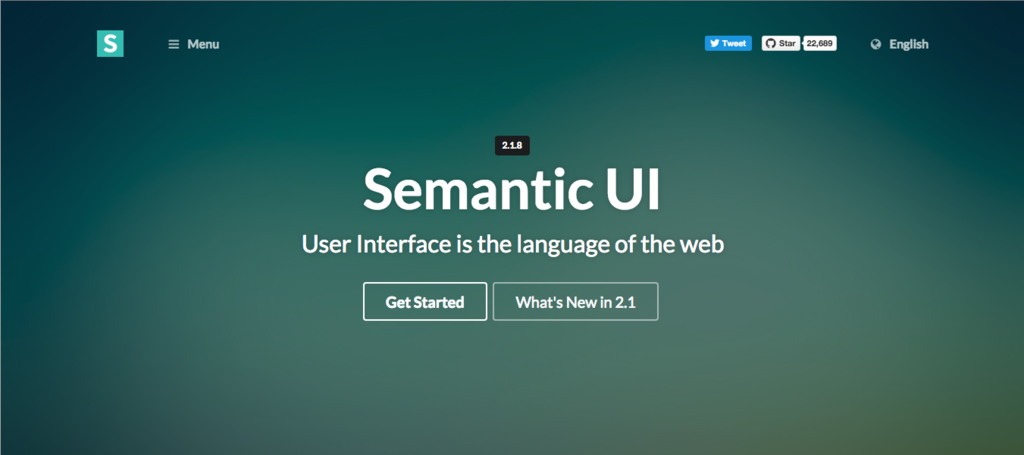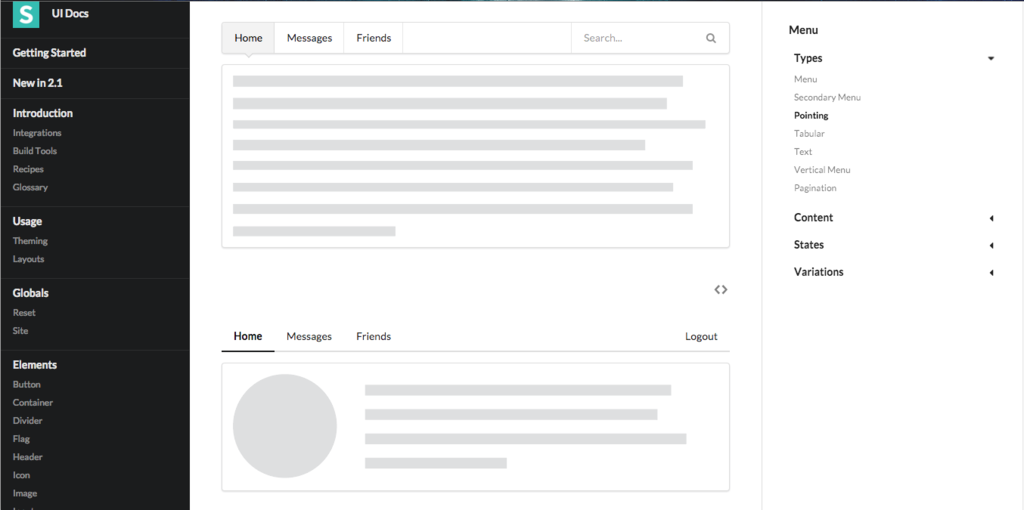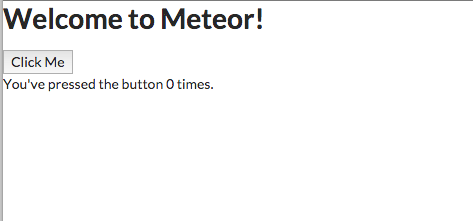MeteorでSemantic UI始めました
メジャーなフレームワークっぽいけど、がっつりフロントエンドな人間ではないので、bizreachさんの勉強会に参加して初めてその存在を知りました。
「Semantic UI」


なにこれ超カッコいい(小並感)
さっそく触ってみることにするが、せっかくなんで先日勉強したMeteor上で使ってみる。
まずはMereorプロジェクトの作成
$ meteor create sample-semantic-ui Created a new Meteor app in 'sample-semantic-ui'. To run your new app: cd sample-semantic-ui meteor If you are new to Meteor, try some of the learning resources here: https://www.meteor.com/learn $ cd sample-semantic-ui
Semantic謹製Meteorパッケージがあるので、インストールする
The trusted source for JavaScript packages, Meteor resources and tools | Atmosphere
semantic:uiの他にも、LESSコンパイル時にベンダープレフィックスを追加してくれるless-autoprefixerとjqueryもインストールしておく
パッケージのインストール
$ meteor add semantic:ui flemay:less-autoprefixer jquery jquery without a version constraint has already been added. Changes to your project's package version selections: flemay:less-autoprefixer added, version 1.2.0 semantic:ui added, version 2.1.7 semantic:ui-data added, version 2.1.7 semantic:ui: Official Semantic UI Integration for Meteor flemay:less-autoprefixer: The dynamic stylesheet language + Autoprefixer $ cd sample-semantic-ui
「custom.semantic.json」の作成
client/lib/semantic-ui/custom.semantic.jsonが推奨構成らしいので、その通り作成する
$ mkdir -p client/lib/semantic-ui/ $ touch client/lib/semantic-ui/custom.semantic.json #※!空ファイルで
ディレクトリ/ファイル群の生成
「custom.semantic.json」を作った上でMeteorを起動すると。。。
$ meteor [[[[[ ~/Documents/src/JavaScript/Meteor/sample-semantic-ui ]]]]] => Started proxy. => Started MongoDB. => Started your app. => App running at: http://localhost:3000/ => Client modified -- refreshing
「custom.semantic.json」と同じ階層に以下のようなファイルやディレクトリが生成される
$ ls -la total 40 drwxr-xr-x 10 makoto staff 340 1 23 04:11 . drwxr-xr-x 3 makoto staff 102 1 23 04:02 .. -rw-r--r-- 1 makoto staff 1518 1 23 04:11 .custom.semantic.json -rw-r--r-- 1 makoto staff 1518 1 23 04:08 custom.semantic.json drwxr-xr-x 8 makoto staff 272 1 23 04:11 definitions -rw-r--r-- 1 makoto staff 4052 1 23 04:11 semantic.less drwxr-xr-x 7 makoto staff 238 1 23 04:11 site -rw-r--r-- 1 makoto staff 2561 1 23 04:11 theme.config.import.less -rw-r--r-- 1 makoto staff 1654 1 23 04:11 theme.import.less drwxr-xr-x 3 makoto staff 102 1 23 04:11 themes
また、「custom.semantic.json」自身も更新されている
{
"definitions": {
"accordion": true,
"ad": true,
"api": true,
〜〜〜 中略 〜〜〜
"table": true,
"transition": true,
"visibility": true,
"visit": true
},
"themes": {
"amazon": false,
"basic": false,
"bookish": false,
〜〜〜 中略 〜〜〜
"rtl": false,
"striped": false,
"timeline": false,
"twitter": false
}
}
ここまでで、SemanticUIのインストールは完了。
試しにHTMLにSemanticのスタイルを当ててみる
/sample-semantic-ui.html
<head> <!-- 中略 --> <template name="hello"> <button class="ui primary button">Click Me</button> <!-- buttonタグにクラス追加 --> <p>You've pressed the button {{counter}} times.</p> </template>
スタイル適用前

スタイル適用後

うん、OKね
CSSフレームワークはbootstarpしか使ったことなかったけど、個人的にSemanticUIのほうがクールだと思ったので、しばらく使ってみたいですね